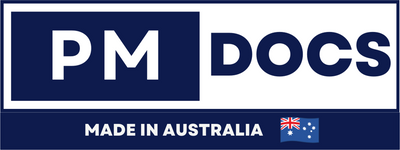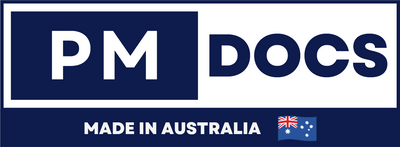Industry Applications: GDPR Toolkit In Finance And Healthcare In Australia
Introduction
As Australian businesses increasingly engage with European partners and clients, the importance of a comprehensive GDPR toolkit has become paramount. This toolkit serves as an essential guide for organizations seeking to navigate the complex landscape of data protection compliance while ensuring the secure handling of personal information. With the finance and healthcare sectors being particularly affected, understanding the industry-specific applications of the GDPR toolkit is critical for mitigating risks and enhancing operational integrity.

Why Finance And Healthcare Are Critical Sectors For GDPR Toolkit Applications In Australia?
The General Data Protection Regulation (GDPR), which was enacted by the European Union, emphasizes the importance of data protection and privacy. As discussions around data governance and privacy continue, Australia's finance and healthcare sectors emerge as critical areas for the application of GDPR principles. Here are the key reasons why these sectors are pivotal for the implementation of GDPR toolkits in Australia.
1. Sensitive Nature of Data - Both the finance and healthcare sectors handle highly sensitive personal data. The finance sector includes details such as bank accounts, credit scores, and transaction histories, while the healthcare sector deals with medical records, patient histories, and personal health information. The GDPR toolkit's focus on data minimization, encryption, and consent management is vital to safeguard this information from breaches and misuse.
2. Increasing Regulatory Scrutiny - With increasing scrutiny from regulatory bodies, both local and international, finance and healthcare organizations must adhere to strict data protection regulations. Employing a GDPR toolkit helps these sectors align their practices with globally recognized standards, minimizing legal risks and ensuring compliance with Australian privacy laws and international regulations.
3. Building Trust with Consumers - In an era where customers are highly conscious of their data privacy, organizations in finance and healthcare need to establish and maintain trust. By applying GDPR principles through a dedicated toolkit, organizations can demonstrate their commitment to protecting personal data, fostering loyalty, and enhancing their brand reputation among consumers.
4. Mitigating Data Breach Risks - Data breaches can have catastrophic consequences for both finance and healthcare organizations, including financial loss, reputational damage, and legal penalties. GDPR toolkits are designed to implement proactive measures, such as robust data protection strategies and incident response plans, that significantly mitigate the risk of data breaches and enhance data security.
5. Transforming Digital Services - The rapid digital transformation of services in finance and healthcare means that organizations must adapt to new technologies while ensuring data protection. A GDPR toolkit aids in integrating privacy by design into digital services, ensuring that personal data is handled securely throughout the data lifecycle.
6. Global Interconnectivity - As Australian finance and healthcare sectors engage with international markets, alignment with GDPR becomes essential. Organizations that apply GDPR toolkits can seamlessly comply with the stringent privacy requirements of other jurisdictions, promoting international collaboration and expanding their reach.
Applying The GDPR Toolkit In Australia’s Finance Sector
1. Understanding GDPR Principles
-
Lawfulness, Fairness, and Transparency: Financial institutions should ensure that personal data is processed legally and fairly while being transparent with customers about how their data is used.
-
Purpose Limitation: Collect data only for specified, legitimate purposes and limit its use to those purposes.
- Data Minimization: Access to personal data should be restricted to what is necessary for the specified purposes.
2. Data Subject Rights
-
Right to Access: Individuals should have the right to access their personal data held by financial institutions.
-
Right to Erasure: Financial institutions must develop policies for allowing customers to request deletion of their personal data when it is no longer needed.
- Right to Data Portability: Customers should be able to easily transfer their personal data between different financial services.
3. Accountability and Governance
-
Data Protection Officer (DPO): Appoint a Data Protection Officer to oversee compliance efforts and act as a point of contact for data protection issues.
-
Regular Audits: Conduct regular audits and assessments to ensure that data processing activities comply with the established GDPR framework.
- Training and Awareness: Develop ongoing training programs for employees to ensure they are aware of data protection practices.
4. Data Protection Impact Assessments (DPIA)
-
Risk Assessment: Implement DPIAs to evaluate the risks associated with data processing projects and identify potential impacts on individual privacy.
- Mitigation Measures: Establish measures to mitigate identified risks before processing data begins.
5. Data Breach Response Plans
-
Incident Response Protocols: Create and regularly update incident response plans to address potential data breaches effectively.
- Notification Procedures: Develop clear procedures for notifying affected individuals and regulatory authorities in the event of a data breach.
6. Cross-Border Data Transfers
-
Compliance with International Transfer Guidelines: Ensure that any transfer of personal data outside Australia complies with GDPR guidelines, including adequacy decisions and standard contractual clauses.
- Risk Assessment: Perform thorough assessments to understand the legal context in other jurisdictions before sending data abroad.
7. Technology and Security Measures
-
Data Encryption and Security: Invest in strong encryption protocols and other security measures to protect sensitive financial and personal data.
- Access Controls: Implement strict access controls to minimize the risk of unauthorized access to data.
8. Collaboration with Regulatory Bodies
- Engagement with Authorities: Encourage dialogue with regulators such as the Office of the Australian Information Commissioner to align practices with both local and international standards.
Applying The GDPR Toolkit In Australia’s Healthcare Sector
Australia's healthcare sector is at a pivotal point in its approach to personal data protection. As privacy regulations evolve globally, the adoption of frameworks like the General Data Protection Regulation (GDPR) presents opportunities for enhancement within the local context. Here’s how the GDPR toolkit can be effectively applied in Australia's healthcare sector:
1. Understanding GDPR Principles
-
Data Protection by Design and Default: Integrating data protection measures from the initial stages of healthcare service delivery.
- Lawful Basis for Processing: Ensuring there is a clear legal basis for handling patient data, which goes beyond consent where applicable.
2. Comprehensive Data Mapping
-
Inventory of Personal Data: Conducting thorough audits to understand what personal data is collected, stored, processed, and shared within healthcare systems.
- Flow Mapping: Documenting how data flows through the organization to identify potential vulnerabilities.
3. Enhancing Patient Rights
-
Right to Access: Implementing systems that allow patients to easily request and obtain copies of their health records.
- Right to Erasure: Establishing clear processes for patients to request the deletion of their personal data when appropriate.
4. Training and Awareness Programs
-
Staff Training: Conducting regular training sessions for healthcare employees on data protection principles and compliance requirements under the GDPR framework.
- Awareness Campaigns: Creating awareness programs that help patients understand their rights concerning personal data.
5. Stronger Consent Mechanisms
-
Informed Consent: Developing robust consent processes that ensure patients are fully informed before their data is used or shared.
- Granular Consent Options: Offering individuals the ability to easily opt-in or opt-out of various data processing activities.
6. Data Breach Response Strategies
-
Breach Notification Procedures: Establishing clear protocols for detecting, reporting, and responding to data breaches, in line with GDPR standards.
- Crisis Management Plans: Developing communication strategies to manage and mitigate potential public relations fallout from data breaches.
7. Regular Compliance Audits
-
Routine Assessments: Conducting regular audits to assess compliance with both GDPR and Australian privacy requirements.
- Risk Analysis: Implementing processes to regularly identify and mitigate risks associated with personal data processing.
Conclusion
The implementation of GDPR principles through a comprehensive toolkit offers Australian industries, particularly finance and healthcare, a robust framework for enhancing data protection practices. As data privacy concerns continue to escalate globally, these sectors can leverage the toolkit to protect sensitive information, foster trust, and promote compliance with international standards. By doing so, they can not only shield themselves from potential legal challenges but also enhance their reputation among consumers who are increasingly aware of and concerned about their data privacy rights.




